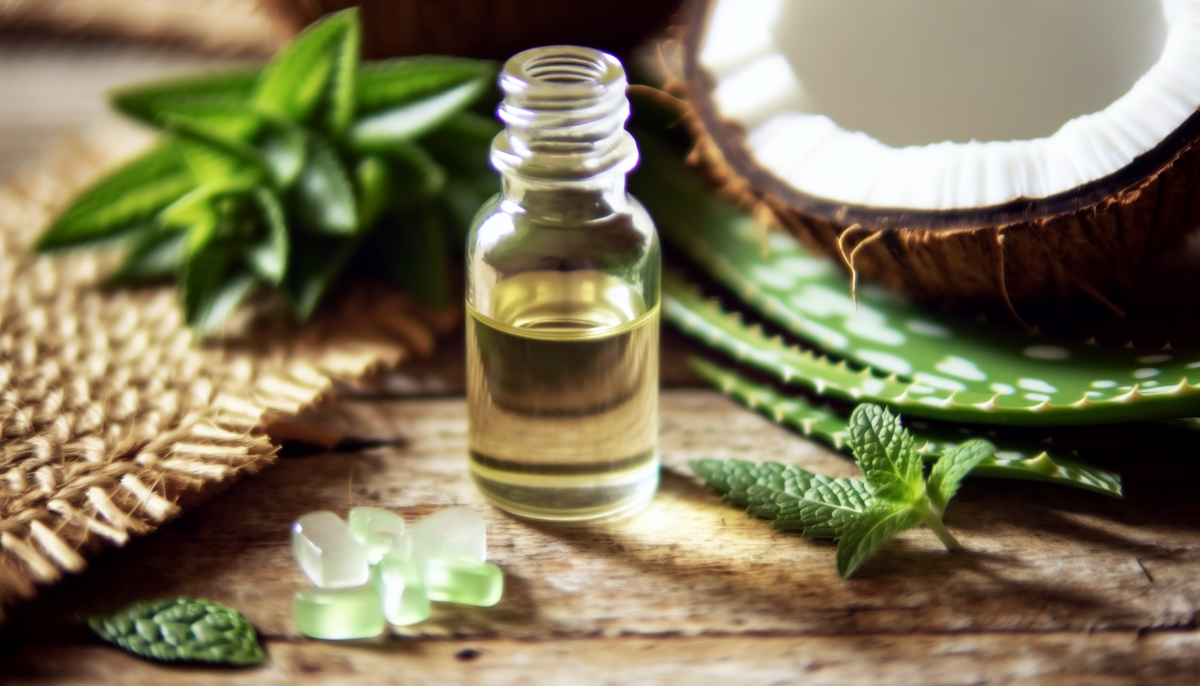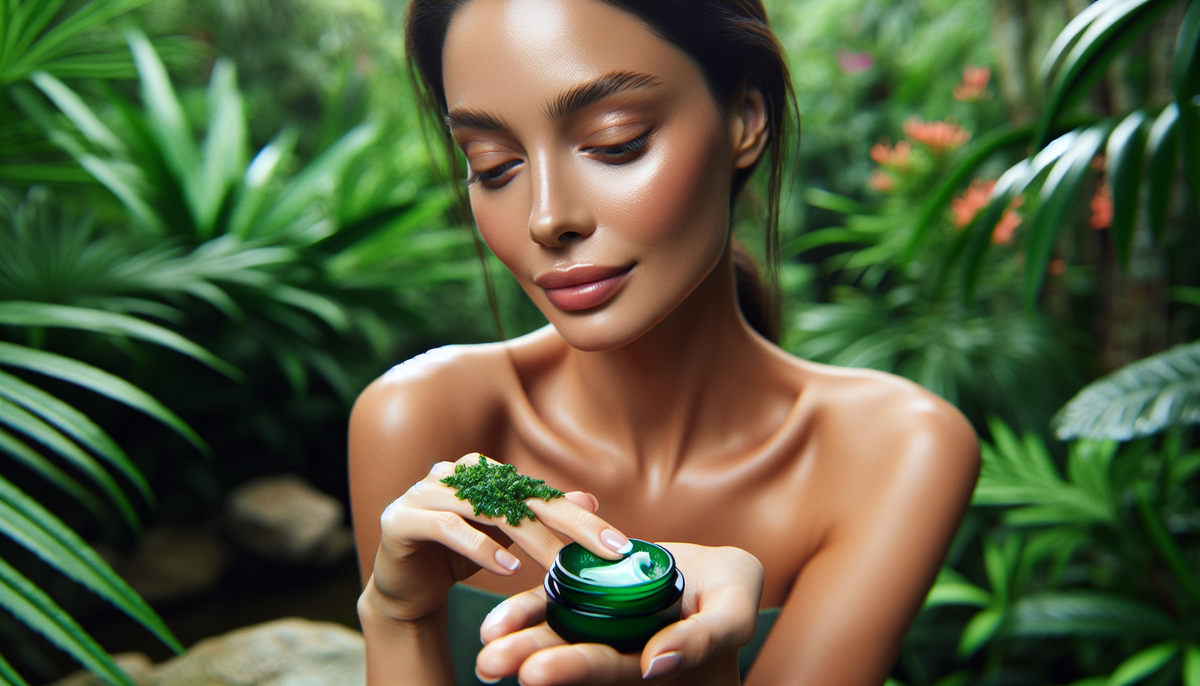Essential Guide to Topical CBD Oil
Written by: Daniel Fayad, Subject Matter Expert and Website President
Published: March 15, 2024; Last updated: April 6, 2024
- 1. Key Takeaways
- 2. Understanding Topical CBD Oil
- 3. The Healing Touch: How Topical CBD Oil Works
- 3.1 Anti-Inflammatory Effects
- 3.2 Targeted Pain Relief
- 3.3 Skin Health Benefits
- 4. Selecting the Best CBD Topicals for Your Needs
- 4.1 Assessing CBD Potency
- 4.2 Ingredient Quality and Safety
- 4.3 Types of CBD Topicals
- 5. Incorporating CBD Oil Into Your Skincare Routine
- 5.1 Application Tips
- 5.2 Combining with Other Skincare Products
- 5.3 Consistency Is Key
- 6. The Synergy of Ingredients: What to Look for in a CBD Topical
- 7. DIY CBD Topicals: Making Your Own CBD Oil Blends
- 8. Addressing Concerns: Safety and Legality of Topical CBD Oil
- 9. Summary
- 10. Frequently Asked Questions
- 10.1 Can CBD be absorbed through the skin?
- 10.2 Does topical CBD help nerve pain?
- 10.3 What are the best CBD creams to use for arthritis?
- 10.4 What is CBD?
- 10.5 How can I choose the best CBD lotion for my needs?
- 11. References
Welcome to the world of topical CBD oil, a rising star in 2023’s wellness and skincare trends. CBD topicals, from lotions to balms, are making waves with their potential therapeutic benefits, offering a new way to experience the power of this natural compound. But what exactly are CBD topicals, and how do they work? Let’s journey into the heart of this intriguing topic.
Key Takeaways
Topical CBD oil, made by infusing cannabidiol into essential oils, comes in various forms, such as creams, lotions, and gels, and is claimed to provide therapeutic benefits like pain relief, inflammation reduction, and skin moisturization without causing intoxication.
CBD topicals work through direct skin application, interacting with endocannabinoid receptors to deliver localized effects and target issues such as joint pain, acne, eczema, and even signs of aging, with some products containing additional skin-health-promoting ingredients.
When selecting CBD topicals, consider the product’s potency, the quality and safety of ingredients, including third-party testing and organic certifications, and the suitable topical type according to your needs, application preferences, and desired benefits.
Understanding Topical CBD Oil
At the core, CBD, also known as cannabidiol, is a compound found in the cannabis plant. When used topically, it is combined with natural essential oils to produce items like CBD topical oil, bringing potential therapeutic benefits without causing intoxication. CBD topicals come in various textures to cater to different application needs and preferences, ranging from oily CBD ointments to the water-and-oil mixtures in CBD topical gels. Some products even utilize CBD isolate for a more concentrated effect. Additionally, applying a CBD tincture topically can also provide potential benefits.
Topical CBD oil boasts many advantages, matching their varied forms. They claim to offer potential pain relief, diminish swelling and discoloration, and even potentially enhance sleep quality. Certain products like CBD lotions also aim to hydrate the skin while providing a refreshing sensation through botanical ingredients.
The Healing Touch: How Topical CBD Oil Works

CBD topicals function by interacting with our body’s endocannabinoid receptors through the skin, resulting in localized effects. Items like CBD skin cream can be directly applied to the skin, posing as a potential alternative to orally ingested CBD products.
Anti-Inflammatory Effects
CBD topicals are champions of anti-inflammatory properties, potentially reducing inflammation and cytokine production by subtly modulating our immune system. They can be applied directly to the skin, with formulas designed for sensitive skin to ensure gentle yet effective application.
Such anti-inflammatory effects may bring relief to conditions like acne and eczema ². Through inflammation reduction, CBD topicals help ease symptoms of these skin conditions, possibly enhancing skin health and comfort.
Targeted Pain Relief
Beyond tackling inflammation, topical CBD products such as creams and lotions could offer focused pain relief. These products can be applied directly to the skin, ensuring CBD reaches the precise area where it’s required. ¹
Notably, CBD creams are specially formulated to alleviate pain. They often contain ingredients like menthol for a cooling effect and lavender and arnica for their soothing and anti-inflammatory properties. Research even suggests that CBD cream could improve joint pain for a substantial percentage of users, possibly alleviating pain and anxiety and enhancing sleep for individuals with arthritis.
Skin Health Benefits

Besides pain and inflammation, CBD oil could also provide numerous benefits for skin health, including addressing dry skin issues. Certain CBD balms and creams aim to maintain skin moisture levels, leading to a soft and well-hydrated skin texture. ²
Moreover, CBD oil has potential anti-aging properties that may help reduce the visibility of lines and wrinkles. Topical CBD products often include a mix of other beneficial ingredients, such as:
Aloe leaf juice
Coconut oil
Lavender extracts
Jojoba seed oil
Shea butter
Hemp seed oil
These ingredients together contribute to the moisturizing and healing benefits of these products.
Selecting the Best CBD Topicals for Your Needs
Armed with knowledge about the potential benefits of CBD topicals, you might be ready to choose a product. However, with the wide variety of CBD products available, selecting the one that best suits your needs is essential.
Assessing CBD Potency
The potency of the CBD product plays a significant role in its effectiveness. Due to CBD’s limited ability to penetrate the skin, a potent product is often required to yield optimal results.
The potency of CBD in topicals is typically measured in milligrams per serving of CBD present in the product. High-potency CBD topicals can deliver notable anti-inflammatory effects and may be particularly beneficial for conditions such as:
Eczema
Psoriasis
Arthritis
Inflammation
Ingredient Quality and Safety
In addition to potency, the quality and safety of the ingredients in CBD topicals should also be considered. The value of third-party testing cannot be overstated, as it offers an independent verification of a product’s claims, assessing purity, potency, and overall quality.
Organic certifications can provide further assurance regarding the product’s safety. These certifications verify that the hemp used in CBD products is cultivated without synthetic fertilizers, pesticides, or herbicides, guaranteeing the product’s freedom from harmful chemicals and impurities.
Types of CBD Topicals
Lastly, when choosing a CBD topical, it’s essential to consider which type best suits your needs. With a range of forms available, you can select a product that matches your preferences for texture and application. Some options include:
Lotions
Creams
Salves
Balms
Gels
Whether you prefer the water-based consistency of a gel or the oil-based formulation of a balm or roll-on, a CBD topical is just right for you.
Incorporating CBD Oil Into Your Skincare Routine
With a deeper understanding of CBD topicals and their selection process, you may question how to integrate them into your skincare regimen. The upcoming section will offer guidance and suggestions on how to do so.
Application Tips
Applying CBD topicals correctly can play a role in their effectiveness. The recommended method involves placing a small amount of the product on the desired area and massaging it into the skin. Applying the product at night before bed can allow the CBD to work overnight while the skin rejuvenates.
The recommended dosage of CBD in topicals typically falls between 10 to 20 mg per application. However, it’s important to remember that the potency and volume of topical CBD oil can vary between products. Hence, starting with a small dose and monitoring your body’s response is advisable.
Combining with Other Skincare Products
CBD topicals can be safely combined with various skincare products, such as face masks, bath bombs, and creams. However, when incorporating CBD oil with other skincare ingredients, starting with smaller amounts and monitoring your body’s response is essential. This cautious approach can help mitigate any potential interactions with other products.
The order of application can also matter. Applying CBD topicals in the order of thinnest to thickest consistency, similar to other skincare products, is recommended.
Consistency Is Key
When it comes to using CBD topicals, consistency is critical. Regular application may improve outcomes and potential benefits, including reduced sebum production and erythema associated with various skin conditions.
CBD topicals can relieve individuals with conditions such as eczema, psoriasis, arthritis, and inflammation, potentially enhancing skin health and comfort.
The Synergy of Ingredients: What to Look for in a CBD Topical
Selecting a CBD topical isn’t solely about the CBD. The combined effect of ingredients can significantly influence the product’s overall effectiveness. The correct blend of natural oils and compounds can enhance the CBD’s efficacy, producing a more robust product.
The most effective combinations often include ingredients such as:
Camphor oil
Menthol crystals
Aloe vera
Arnica montana extract
These ingredients work together with the CBD, enhancing its potential benefits and improving the product’s overall experience.
DIY CBD Topicals: Making Your Own CBD Oil Blends
Crafting personal CBD oil blends at home is a possibility for DIY enthusiasts. The basic process involves blending the following ingredients:
An oil base (such as jojoba oil or coconut oil)
Water
Beeswax
CBD oil or tincture
The precise measurements and ingredients can vary depending on the recipe you choose.
In addition to CBD, you can also enhance your homemade topicals with essential oils, such as:
Shea butter
Coconut oil
Jojoba oil
Argan oil
Calendula
Arnica
Camphor oil
Menthol crystals
Eucalyptus essential oil
Tea tree oil
These oils have been known to enhance the effects of CBD topicals.
Addressing Concerns: Safety and Legality of Topical CBD Oil
Like any new product, safety, and legality concerns might arise regarding CBD topicals. While CBD topicals are generally considered safe for use, certain groups, like pregnant women and nursing mothers, are recommended to abstain from them. Users should also know possible side effects, including digestive issues and contact dermatitis from high doses.
When it comes to legality, the level of THC in a CBD product is the critical factor. CBD products containing less than 0.3% THC are legal at the federal level, while those with higher levels of THC are classified as marijuana and are not federally legal.
Summary
To wrap up, CBD topicals offer a unique way to experience the potential benefits of CBD. These products have a lot to offer, from reducing inflammation and relieving pain to improving skin health and moisture. However, choosing high-quality products is essential; applying them correctly and using them consistently for the best results is vital. CBD topicals can enhance your skincare routine and overall well-being with the proper knowledge and approach.
Frequently Asked Questions
Can CBD be absorbed through the skin?
Yes, CBD can be absorbed through the skin and efficiently reach the muscles and joints within minutes.
Does topical CBD help nerve pain?
Topical CBD may not directly fix damaged nerves, but it can help alleviate nerve pain by potentially numbing or reducing the discomfort, although evidence is limited.
What are the best CBD creams to use for arthritis?
The best CBD cream for arthritis pain contains high-quality CBD extract and soothing ingredients like menthol or camphor. Consider trying products that have received positive reviews for arthritis relief.
What is CBD?
CBD is a compound found in the cannabis plant, often used in skincare products with natural essential oils for potential therapeutic benefits without causing intoxication.
How can I choose the best CBD lotion for my needs?
Consider the potency, quality, and type of CBD topical that best suits your needs when choosing a CBD topical.
References
Hall, N., James, B., Bhuiyan, M. A. N., Crane, E., Falgout, C., & Murnane, K. S. (2023). Topical cannabidiol is well tolerated in individuals with a history of elite physical performance and chronic lower extremity pain. Journal of cannabis research, 5(1), 11. https://doi.org/10.1186/s42238-023-00179-8
Makhakhe L. (2022). Topical cannabidiol (CBD) in skin pathology – A comprehensive review and prospects for new therapeutic opportunities. South African family practice : official journal of the South African Academy of Family Practice/Primary Care, 64(1), e1–e4. https://doi.org/10.4102/safp.v64i1.5493

Written by Daniel Fayad - Subject Matter Expert and Website President
Dan Fayad is a results-driven healthcare administration expert and content writer. With a Master of Health Administration from the University of Southern California, he’s carved a niche for himself in the dynamic world of healthcare and business development. Dan uses his experience to educate and empower people on their wellness journeys.
Join the CBDeals Club!
Get 10% off your first order and receive our best and exclusive promotions directly to your inbox!

